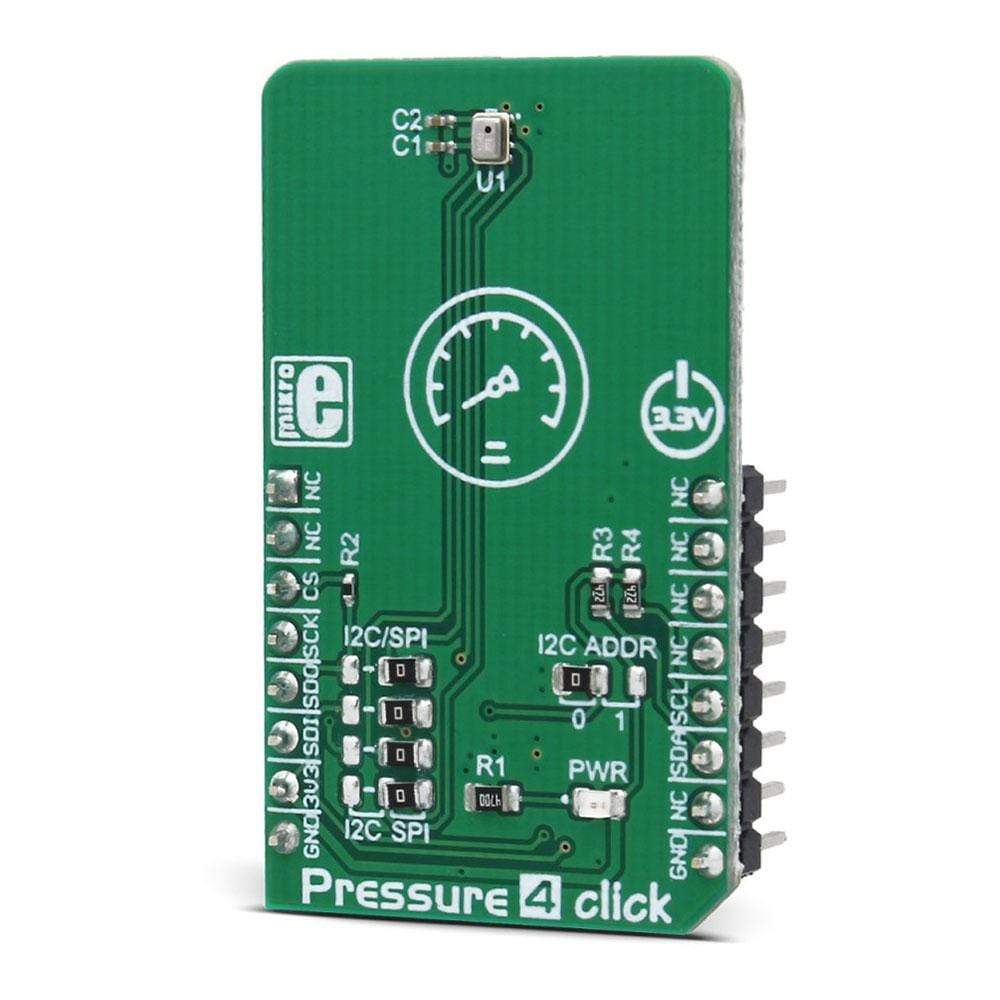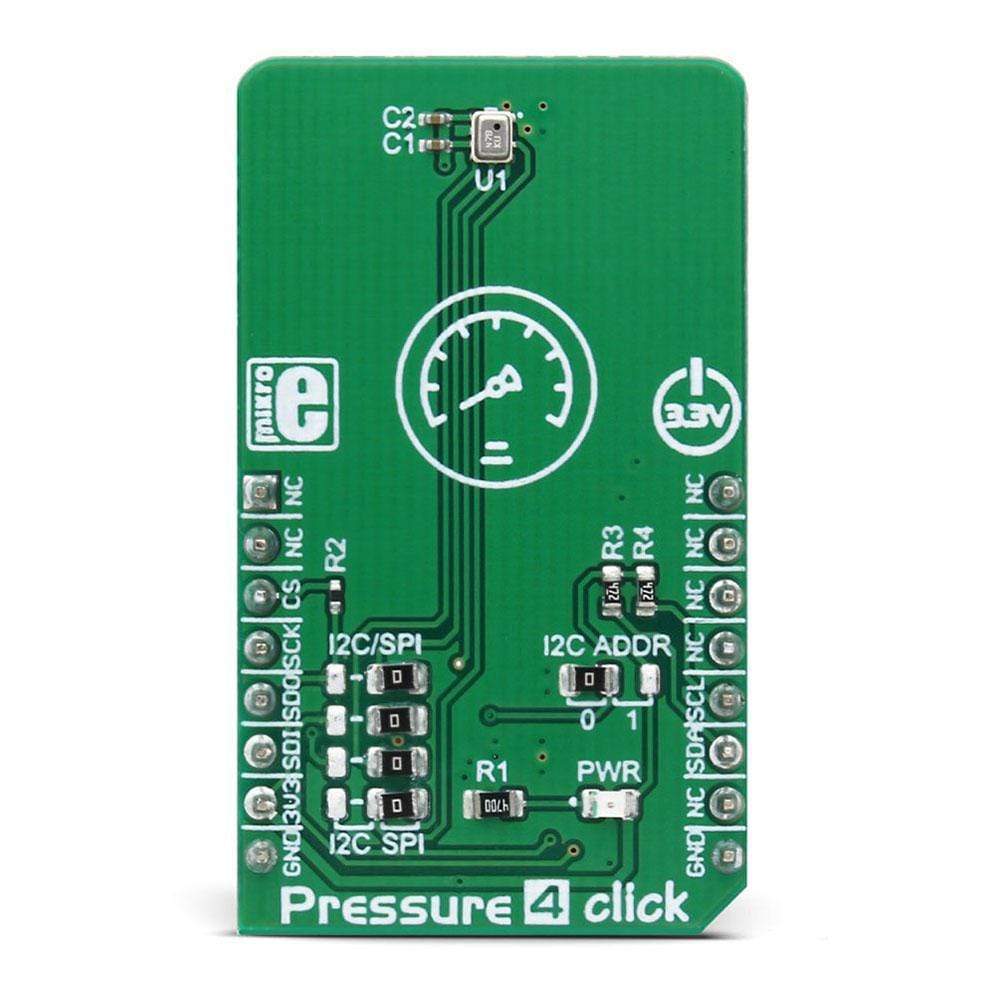

Overview
The Pressure 4 Click Board™ is an absolute barometric pressure measurement board, which features a low power consumption, high precision barometric pressure sensor. Capable of using both SPI and I2C communication protocols, the Pressure 4 Click Board™ allows being interfaced with a broad range of various microcontroller units (MCUs). The sensor used on this Click Board™ features onboard processing capabilities, such as the IIR filtering, used to filter out abrupt changes of pressure.
Low power consumption allows the Pressure 4 Click Board™ to be used in many portable, battery-powered applications. Besides the pressure, it can also measure the ambient temperature, which can be used for compensation calculations.
Downloads
Das Pressure 4 Click Board™ ist eine Platine zur Messung des absoluten Luftdrucks, die über einen hochpräzisen Luftdrucksensor mit geringem Stromverbrauch verfügt. Das Pressure 4 Click Board™ kann sowohl SPI- als auch I2C-Kommunikationsprotokolle verwenden und lässt sich mit einer Vielzahl verschiedener Mikrocontrollereinheiten (MCUs) verbinden. Der auf diesem Click Board™ verwendete Sensor verfügt über integrierte Verarbeitungsfunktionen wie die IIR-Filterung, mit der abrupte Druckänderungen herausgefiltert werden.
Durch den geringen Stromverbrauch kann das Pressure 4 Click Board™ in vielen tragbaren, batteriebetriebenen Anwendungen eingesetzt werden. Neben dem Druck kann es auch die Umgebungstemperatur messen, die für Kompensationsberechnungen verwendet werden kann.
| General Information | |
|---|---|
Part Number (SKU) |
MIKROE-3020
|
Manufacturer |
|
| Physical and Mechanical | |
Weight |
0.019 kg
|
| Other | |
Country of Origin |
|
HS Code Customs Tariff code
|
|
EAN |
8606018712885
|
Warranty |
|
Frequently Asked Questions
Have a Question?
Be the first to ask a question about this.


